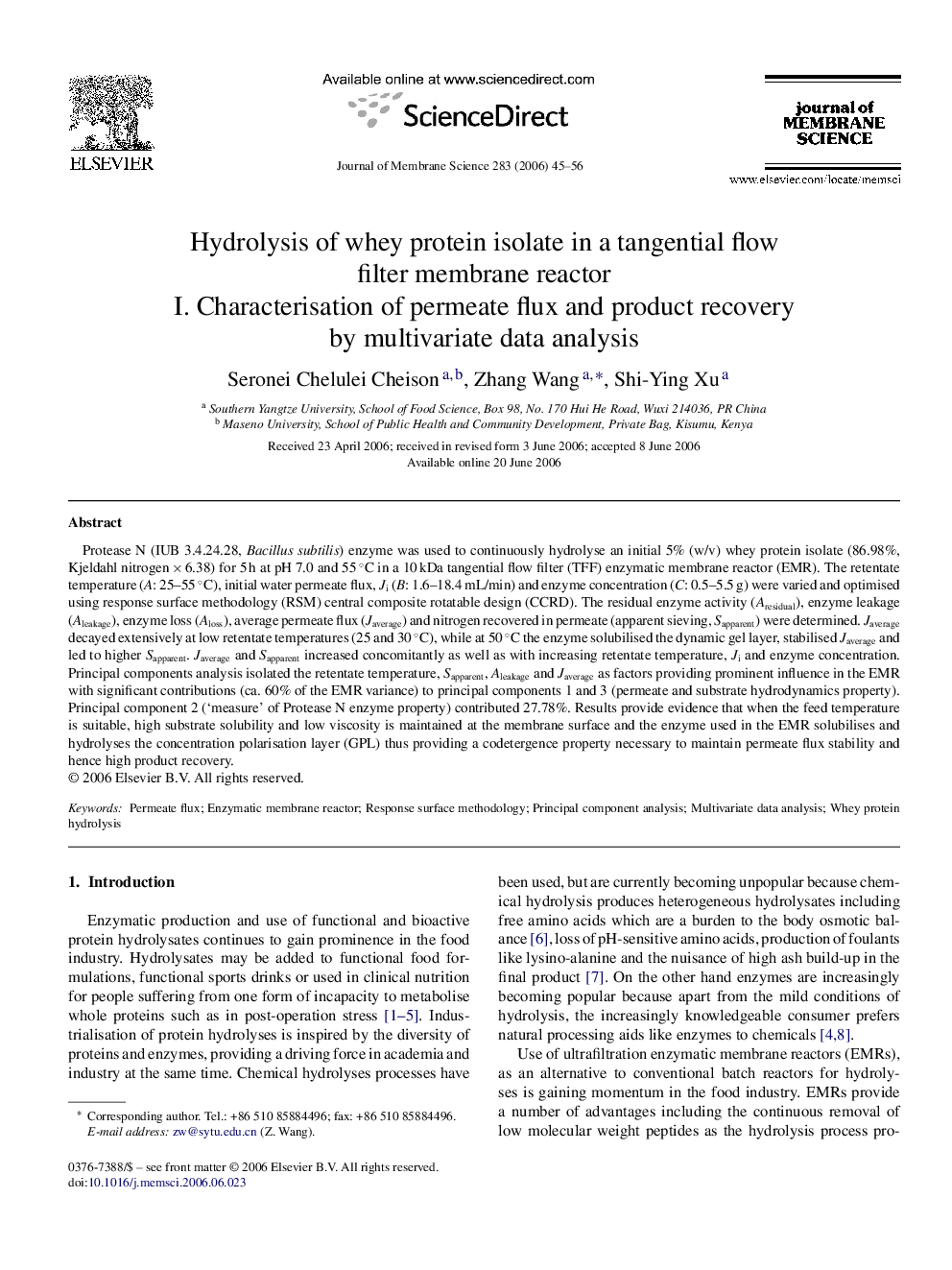| کد مقاله | کد نشریه | سال انتشار | مقاله انگلیسی | نسخه تمام متن |
|---|---|---|---|---|
| 639202 | 1456188 | 2006 | 12 صفحه PDF | دانلود رایگان |

Protease N (IUB 3.4.24.28, Bacillus subtilis) enzyme was used to continuously hydrolyse an initial 5% (w/v) whey protein isolate (86.98%, Kjeldahl nitrogen × 6.38) for 5 h at pH 7.0 and 55 °C in a 10 kDa tangential flow filter (TFF) enzymatic membrane reactor (EMR). The retentate temperature (A: 25–55 °C), initial water permeate flux, Ji (B: 1.6–18.4 mL/min) and enzyme concentration (C: 0.5–5.5 g) were varied and optimised using response surface methodology (RSM) central composite rotatable design (CCRD). The residual enzyme activity (Aresidual), enzyme leakage (Aleakage), enzyme loss (Aloss), average permeate flux (Javerage) and nitrogen recovered in permeate (apparent sieving, Sapparent) were determined. Javerage decayed extensively at low retentate temperatures (25 and 30 °C), while at 50 °C the enzyme solubilised the dynamic gel layer, stabilised Javerage and led to higher Sapparent. Javerage and Sapparent increased concomitantly as well as with increasing retentate temperature, Ji and enzyme concentration. Principal components analysis isolated the retentate temperature, Sapparent, Aleakage and Javerage as factors providing prominent influence in the EMR with significant contributions (ca. 60% of the EMR variance) to principal components 1 and 3 (permeate and substrate hydrodynamics property). Principal component 2 (‘measure’ of Protease N enzyme property) contributed 27.78%. Results provide evidence that when the feed temperature is suitable, high substrate solubility and low viscosity is maintained at the membrane surface and the enzyme used in the EMR solubilises and hydrolyses the concentration polarisation layer (GPL) thus providing a codetergence property necessary to maintain permeate flux stability and hence high product recovery.
Journal: Journal of Membrane Science - Volume 283, Issues 1–2, 20 October 2006, Pages 45–56